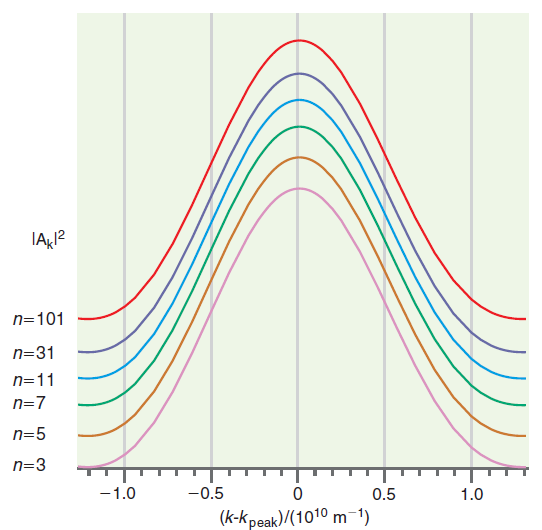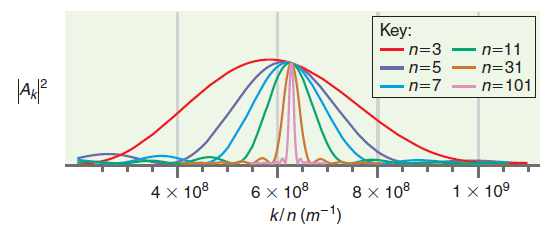In this problem, we consider the calculations for Ï p and Ï x for the particle in
Question:
a. First we must relate k and px. From E = p2x/2m and E = n2h2/8ma2, show that px = nh/2a.
b. Use the result from part (a) together with the relation linking the length of the box and the allowed wavelengths to obtain px = hk.
c. Relate Δ px and Δpx /px with k and Δk.
d. The following graph shows ˆ£Akˆ£2 versus k €“ k peak . By plotting the results of Figure 17.5 in this way, all peaks appear at the same value of the abscissa. Successive curves have been shifted upward to avoid overlap. Use the width of the ˆ£Akˆ£2 peak at half height as a measure of Δk. What can you conclude from this graph about the dependence of Δpx on n?

e. The following graph shows ˆ£Akˆ£2 versus k /n for n = 3, n = 5, n = 7, n = 11, n = 31, and n = 101. Use the width of the ˆ£Akˆ£2 peak at half height as a measure of Δk /n. Using the graphs, determine the dependence of Δpx /px on n. One way to do this is to assume that the width depends on n like (Δpx /px) = nα, where α is a constant to be determined. If this relationship holds, a plot of ln (Δpx /px) versus ln n will be linear and the slope will give the constant α.

Figure 17.5

Step by Step Answer:






